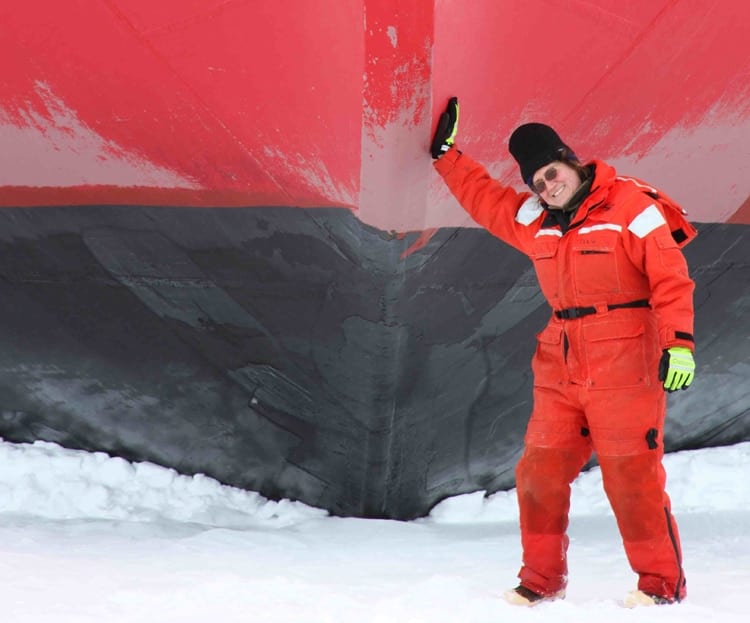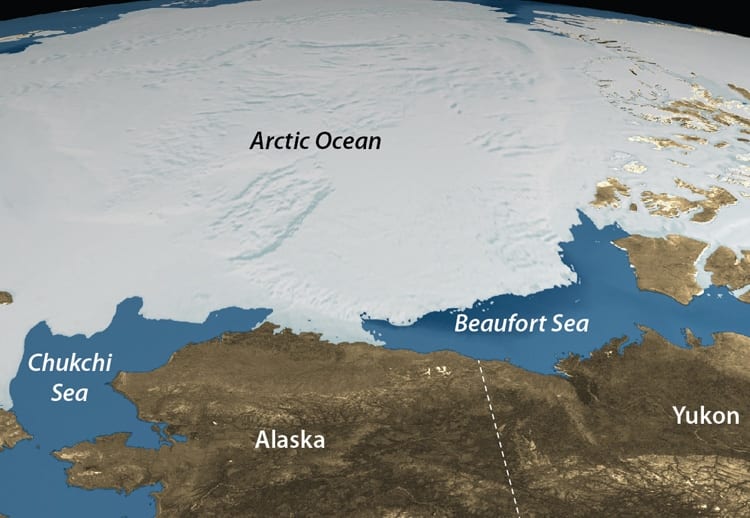WHOI Part of the Stantec Team Selected to Lead Major Marine Arctic Ecosystem Study
November 26, 2014
Woods Hole Oceanographic Institution (WHOI), as a part of the Stantec Team, has been selected by an interagency scientific review panel to lead a long-term scientific study of the Arctic marine ecosystem along the Beaufort Sea shelf from Barrow, Alaska, to the Mackenzie River delta in Canadian waters.
The Marine Arctic Ecosystem Study (MARES) stems from increased attention in the Arctic region to climate change, energy development, and sustainability. Information gained will aid government, industry, and communities in making decisions related to regulations, resource management, economic development and environmental protection issues.
WHOI scientists, as well as partners from more than 25 universities, environmental research organizations, private consulting firms, and independent scientists will be involved in the study.
“We are delighted to be participating in this innovative and ambitious project,” says Carin Ashjian, a senior scientist and project lead at WHOI. “The Beaufort Sea is vulnerable to ongoing climate and environmental change. It’s exciting to be part of a collaborative team that includes academic and industry scientists to advance our understanding of the ecosystem processes in this region and contribute to the models that can help society plan for and mitigate changes.”
Public/Private Partnership
MARES is an integrated ecosystem research initiative coordinated and planned by Bureau of Ocean Energy Management (BOEM), a bureau of the Department of the Interior, in conjunction with its federal and private sector research partners: U.S. Arctic Research Commission, U.S. Coast Guard, U.S. Geological Survey, U.S. Integrated Ocean Observing System, Marine Mammal Commission, National Science Foundation, National Oceanic and Atmospheric Administration, Office of Naval Research, and Shell Oil Company.
“BOEM is pleased to join our Federal and industry partners to undertake this forward-looking project,” said BOEM Acting Director Walter Cruickshank. “With widespread interest in the Artic, including potential oil and gas leasing and development, we’re looking to significantly expand our knowledge of the Beaufort Sea ecosystem to inform our decision-making.”
Study Goals
The overarching goal of the study is to better understand the interrelationships of the physical, biological, chemical and human systems, including traditional knowledge, of the Beaufort Sea and to advance scientific prediction capabilities for linkages between marine life, human uses, sea ice, atmospheric and oceanic processes and river discharge.
The research is being undertaken under the National Oceanographic Partnership Program (NOPP), which leverages resources from federal agencies, academia, industry and non-governmental organizations to support ocean research. It is important for BOEM and its NOPP partners to study and monitor areas known for high biological productivity and prevalent subsistence use to ensure their protection.
Over the course of the study, the team will use multiple sampling platforms, including ships, drones, satellites, and snow machines; multiple sampling techniques such as ice and snow sensors, acoustics and nets and multiple ocean, ice and air modeling approaches.
The study results will inform several research areas including environmental protection, climate change, food security, biodiversity, exploration and discovery and ecosystem services (the contributions that a biological community and its habitat provide to our day to day lives). An independent review board of internationally recognized experts will help steer and peer review the five-year project.
About Woods Hole Oceanographic Institution
The Woods Hole Oceanographic Institution is a private, non-profit organization on Cape Cod, Mass., dedicated to marine research, engineering, and higher education. Established in 1930 on a recommendation from the National Academy of Sciences, its primary mission is to understand the ocean and its interaction with the Earth as a whole, and to communicate a basic understanding of the ocean’s role in the changing global environment. For more information, please visit www.whoi.edu.
About Stantec
We’re active members of the communities we serve. That’s why at Stantec, we always design with community in mind.
The Stantec community unites more than 14,000 employees working in over 230 locations. Our work—professional consulting in planning, engineering, architecture, interior design, landscape architecture, surveying, environmental sciences, project management, and project economics—begins at the intersection of community, creativity, and client relationships. With a long-term commitment to the people and places we serve, Stantec has the unique ability to connect to projects on a personal level and advance the quality of life in communities across the globe.
About BOEM
BOEM promotes energy independence, environmental protection and economic development through responsible, science-based management of offshore conventional and renewable energy and marine mineral resources. BOEM’s Environmental Services Study Program (ESP) develops, funds, and manages rigorous scientific research to inform policy decisions regarding the development of energy and mineral resources on the Outer Continental Shelf.
Contacts
Stephanie Murphy
WHOI Media Relations Manager
Ph: (508) 289-3340
Cell: (508) 566-3055
media@whoi.edu
Alison Smith
Stantec Media Relations/US
Ph: (617) 654-6062
Cell: (978) 727-7097
Rachel Sa
Stantec Media Relations/Canada
Ph: (416) 598-5699
Cell: (416) 902-0930
Marjorie Weisskohl, APR
Public Affairs Specialist
Bureau of Ocean Energy Management
U.S. Department of the Interior
Ph: (703) 787-1304


